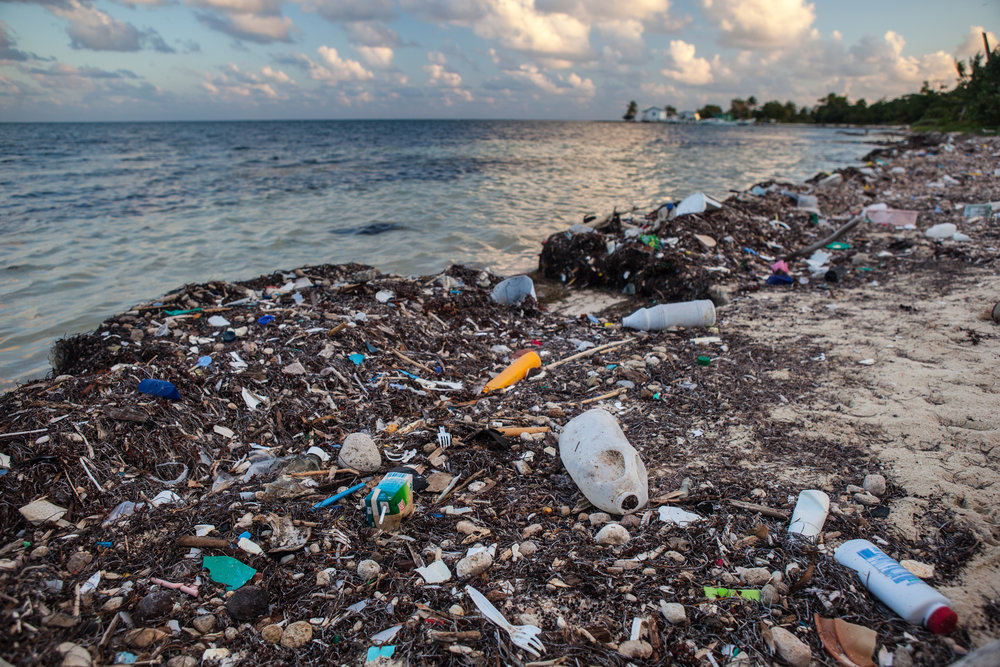What is spread out to be twice the size of Texas and weighs the equivalent of 500 Jumbo Jets? You guessed it…the largest of five offshore plastic collections in our oceans.
Located between California and Hawaii, the Great Pacific Garbage Patch (GPGP) is approximately 80,000 tonnes of 1.8 trillion plastic pieces. The other floating islands of garbage are found across the globe, as detailed by the map below.
Anywhere between 1.15 to 2.41 million tonnes of plastic enter our oceans every year and, because plastic floats, ocean currents cause the hoards of plastic to congregate in bulk. Once a piece of plastic is trapped in the plastic mass, it is extremely difficult for it to split off again until it breaks up into smaller microplastics in the sun. It’s not a single patch, as it would take a good deal of force to actually congeal to form an island, but it is spread out across a general area influenced by currents, making specific predictions somewhat difficult.
It is estimated that the Great Pacific Garbage Patch alone contains 80,000 to 100,000 tonnes of plastic, according to the Ocean Cleanup, and will continue to grow as plastic enters the ocean at exponential rates without any exiting. This is especially worrisome because plastic is virtually indestructible — it can take almost 1000 years for a plastic item to decompose — and plastic objects from the 1970s have already been identified in the GPGP.
The GPGP contains 180 times more plastic than marine life, and the Ocean Cleanup has documented that “sea turtles by-caught in fisheries operating within and around the patch can have up to 74% (by dry weight) of their diets composed of ocean plastics.” Fish get caught in the nets that make up almost half of the floating mass of debris. And turtles are not the only marine animals affected — marine life is severely threatened by plastics in the ocean and by extension through the food chain, we are too.
Despite the enormity of the problem, researchers are finding new ways to try and clean it up. A 2,000-foot floating ‘boom’ named Wilson — after losing the war with nature a few months ago — has been brought into the ocean again to resume its mission of collecting trash from the patch. Having re-entered the ocean on June 18th, the instrument has been specifically designed to disturb marine life as little as possible, as shown by the graphic below. To hear the latest on the Ocean Cleanup’s progress with Wilson, check out their website.
Although it seems like such an enormous problem that is almost too difficult to comprehend, remember that you can help by limiting your use of plastic. So, the next time you reach for a plastic water bottle or a single-use plastic shopping bag, try finding a reusable alternative instead — it’s one less piece of plastic in the ocean.
Header Image by BayStreetEx
 Food
Food Farmers
Farmers Sustainable Living
Sustainable Living Living Planet
Living Planet News
News